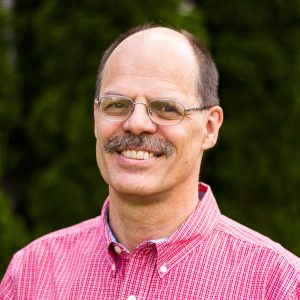Harald Ade
Professor Harald W. Ade
Distinguished Professor, Physics Department
North Carolina State University
Biography
Professor Ade received his PhD in 1990 in Physics from SUNY at Stony Brook (now Stony Brook University) and joined the NCSU faculty in 1992. He has held appointments at NCSU ever since: Assistant Professor (1992-97), Associate Professor (1997-2001), and Full Professor (since 2001-2011), Distinguished Professor of Physics (2012-2017), and Goodnight Innovation Distinguished Professor (2017 – present).
Prof. Ade developed a number of novel instruments and characterization methods, which include Near Edge X-ray Absorption Fine Structure (NEXAFS) microscopy, X-ray linear dichroism microscopy, X-ray photoemission microscopy, resonant x-ray reflectivity and scattering, and 13C-labeling in Secondary Ion Mass Spectrometry (SIMS) depth profiling. Their applications focus primarily on determining the composition, morphology, and structure of polymeric and electronic materials at the sub-micron spatial scale
Honors & Awards
- 2018 Highly Cited Researcher (Clarivate Analytics)
- 2017 Highly Cited Researcher (Clarivate Analytics)
- 2017 Goodnight Innovation Distinguished Professor
- 2016 Member, Research Leadership Academy at NCSU
- 2016 NCSU Alumni Outstanding Research Award
- 2014 Sayers Lecture, Physics, NCSU
- 2013 Shirley Award for Outstanding Science at the Advanced Light Source
- 2013 NCSU Alumni Outstanding Research Award
- 2011 Fellow, American Association for the Advancement of Science
- 2010 Fellow, American Physical Society
- 2002 Halbach Award for Innovative Instrumentation, Advanced Light Source, Berkeley
- 2000 K. F. J. Heinrich Award, Microbeam Analysis Society
- 1995 Proctor & Gamble Presidential Faculty Fellow Support Program
- 1995 Sigma Xi Research Award, North Carolina State University Chapter
- 1994 NSF Young Investigator Award
- 1994 DuPont Young Professor Grant
- 1994 Finalist, Proctor & Gamble University Exploratory Research Program
- 1991 R&D 100 Award

